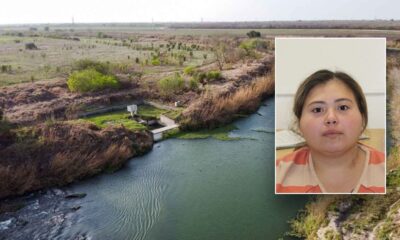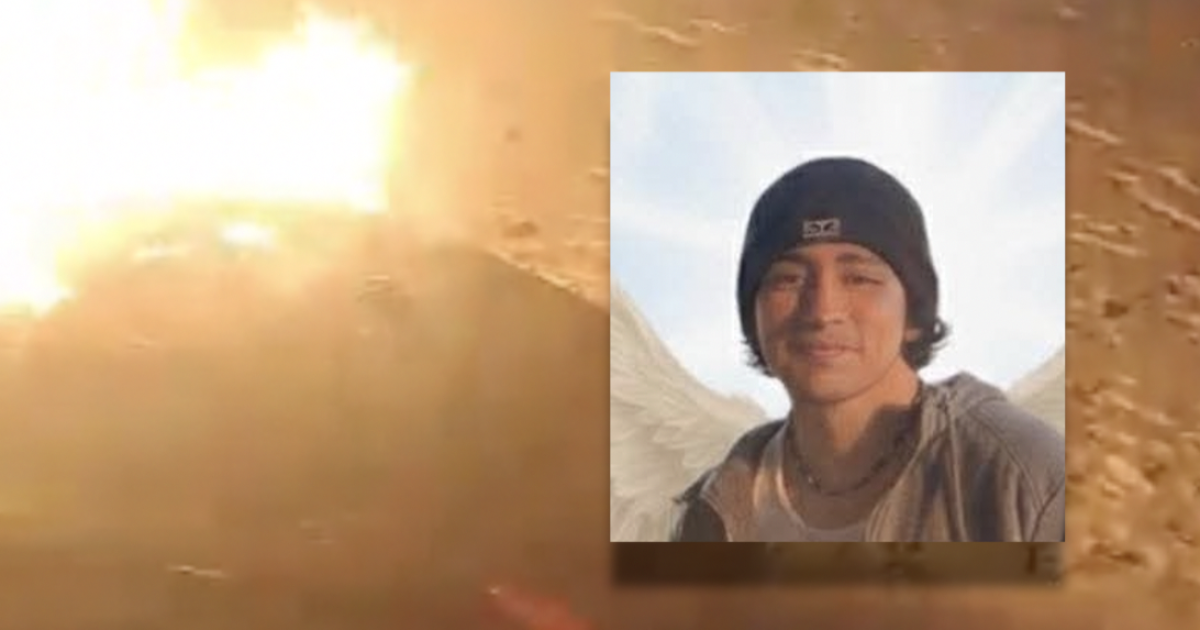Contestations over the Republican National Committee’s efforts to foreclose avenues for lawful protest outside this week’s Republican National Convention (RNC) were already heated months before GOP delegates started booking their flights to Milwaukee, Wisconsin, for the convention.
So it was something of a victory for free speech that, after months of mobilizing and negotiations — and in the unexpectedly heightened state of policing following the July 13 assassination attempt on Donald Trump — some protesters managed to demonstrate close enough to the RNC to be seen and heard by its attendees.
The path leading up to that point was filled with uncertainty over whether protest rights would be subordinated to GOP demands. Ahead of the RNC, downtown Milwaukee became a labyrinth of closed streets, vehicle checkpoints and even maritime restrictions on the Milwaukee River. For months, the GOP negotiated over the boundaries permitted for protest. It was clear that the Republican National Committee was trying to engineer a world in which delegates could attend the entire RNC without ever seeing a protester.
To the protesters, of course, this was unacceptable. In the months leading up to the convention, the Coalition to March on the RNC engaged in continuous negotiations with RNC authorities determined to sideline protests and reduce visibility. After the Secret Service established an initial boundary, the Republican Party demanded an even larger exclusion zone, a demand to which the Secret Service partially acceded. Less than a month before the convention, the City of Milwaukee consigned all protesters to a set march route that came, at its closest, four and half blocks from the Fiserv Forum where the nomination would be held. The ACLU of Wisconsin sued on behalf of the Coalition to March on the RNC, arguing that the protest restrictions unduly limited the exercise of free speech rights. A judge denied the injunction on the grounds that, because the mandated protest route applied to every group equally, no First Amendment concerns were implicated. Exercising remarkable deference to the Secret Service and City of Milwaukee protest restrictions, the judge wrote that the “Court will not second guess their judgements, particularly with respect to complex issues like the security needs for a large convention.”
In the aftermath of the ruling, the Coalition to March on the RNC reiterated a commitment to conducting a protest “within sight and sound” of the main venue. Just days before the convention, the coalition remained in negotiations with the city.
On July 12, Milwaukee city’s communications director Jeff Fleming commented to NBC News, “Mayor Cavalier Johnson has said the protesters want to be on the stage at Fiserv Forum, and the Republicans want the protesters to be on the moon.” In the end, the City of Milwaukee resisted the pressure to put protesters on the moon; on July 12, the coalition announced that it had come to a “handshake agreement” with the city about the march route.
In addition to the Secret Service, as many as 4,500 officers from 85 police agencies from 24 states and Washington, D.C. were deployed to Milwaukee.
On July 15, the opening day of the convention, hundreds of protesters gathered in Red Arrow Park, a few blocks from the fora where delegates checked in for the major events of the afternoon, including Donald Trump’s official nomination as the Republican candidate for president. The protesters represented a broad spectrum of causes, from generic opposition to the GOP to comparatively narrower issues, with Palestine and abortion rights most heavily represented.
In defiance of the city’s distant designated “parade route,” the march proceeded along the coalition’s planned route, with the exception of nixing planned transit through Pere Marquette Park, which had been subsumed into the Secret Service’s credentialed perimeter. The protest chants reflected the diversity of causes under the coalition’s umbrella. As protesters surged over vehicle road closure barriers toward the Fiserv Forum, they chanted, “Up and down, Milwaukee is a union town,” as well as, “From Palestine to the Philippines, stop the U.S. war machine,” and “Donald Trump, KKK, no fascist USA.”
Chants in favor of reproductive rights, including “Keep abortion safe and legal” and “Abortion is a miracle” also featured prominently, particularly after coalition protesters encountered an anti-choice group (also outside the city-designated parade route) demanding that the GOP platform include a total ban on abortion.
As pushed for by the coalition, protesters chanted outside the Fiserv Forum, just outside the Secret Service credentialed perimeter, as a handful of RNC delegates went through the security checkpoint. Police assigned to the protest cleared a corridor, but otherwise refrained from interference with the protest. (Though, it’s worth noting, I observed police allowing a solitary protester with a large sign reading “Trump for Israel, Biden for Hamas” to block one of the entrances to the security checkpoint.)
While few police officers were assigned to the fringes of the protest crowd, police from across the country monitored the protest from every street corner. In addition to the Secret Service, as many as 4,500 officers from 85 police agencies from 24 states and Washington, D.C. were deployed to Milwaukee. To deal with lodging for that large number of incoming police, Milwaukee requested 4,000 dorm rooms at five local colleges and universities.
A day after the protests, on July 16, five Columbus Police Department officers shot and killed Samuel Sharpe Jr., a Black man, over a mile from the RNC.
With the sheer number of agencies present, Milwaukee decided against holding other police departments to certain city policies, including those requiring body-worn cameras, a critical transparency measure aimed at providing the public with an unbiased record of incidents of misconduct. No additional training was required for RNC assignment, though the Milwaukee Police Department ordered incoming agencies to follow the Milwaukee Police Department’s standard operating procedures on use of force, crowd control and rules of engagement. Ahead of the RNC, the Milwaukee Police Department stated that it intended to assign outside officers to nonpublic facing positions, such as traffic control.
Police presence on the ground told another story. In addition to the Milwaukee Police Department officers on every corner (including seven on horseback), Truthout sighted five other agencies along the protest route. One agency, the Columbus Police Department, clearly took part in policing the protest, intermixing at the margins of the crowd and separating out the occasional pro-Trump provocateur wading into the left-wing coalition crowd.
Columbus Police Department officers wore vests reading “dialogue,” and one officer told Truthout that the unit received special First Amendment training. Later in the march, Milwaukee Police Department officers also entered the crowd. One officer, asked about the Milwaukee Police Department’s role in the crowd relative to that of the Columbus Police Department, said he “didn’t know.”
Along the march route, in addition to the presence of dozens of the estimated 1,600 Milwaukee Police Department officers assigned to the RNC, I observed a public-facing presence from the Columbus Police Department and four other agencies. Eighteen police officers on bikes from a police department in North Carolina circled the protest at one point along the route. Officers from the Carroll County, Maryland, sheriff’s office deployed at several points. One officer stated that, though their role was to conduct security at the RNC, they were also policing protest. Outside the Fiserv Forum and at vehicle security areas, nearly as many Indiana State Police officers as Secret Service staffed checkpoints and watched from street corners. Approximately 20 police officers from Green Bay, Wisconsin, watched over part of the protest. All this policing was backed up by an extensive surveillance apparatus. Ahead of the (in the end, mostly virtual) DNC in 2020, Milwaukee acquired new surveillance cameras, facial recognition technology and unmarked surveillance vans equipped with drone launch sites, equipment likely deployed for this year’s RNC security. And after the July 13 assassination attempt on Donald Trump, the Milwaukee Southeastern Wisconsin Threat Analysis Center, part of a network of fusion center intelligence agencies created after 9/11 with a focus on counterterrorism, issued a joint assessment with the FBI, Secret Service and Milwaukee Police Department based on intelligence gathered.
Despite the Republican National Committee’s calls to exile protesters and the City of Milwaukee’s decision to banish protesters to a distant official “parade route,” determined protesters marched within a block of the Fiserv Forum.
With the host of agencies brought in to support RNC policing, Milwaukee created a volatile situation. A day after the protests, on July 16, five Columbus Police Department officers — the same department policing the protest — shot and killed Samuel Sharpe Jr., a Black man, over a mile from the RNC. The shooting was unrelated to any RNC security purpose, and validated fears from community members about the risks to community safety posed by the thousands of police officers inundating the city. “To be honest, this was the biggest fear that we had about the RNC,” Eva Welch, co-founder of the community organization Street Angels, told the Milwaukee Journal Sentinel.
At Monday’s march, protesters were able to demonstrate under close watch but without arrest or direct confrontation. But the events could easily have gone in another direction. Several of the agencies pulled in to assist with RNC security have track records of egregious misconduct in policing protest, as my colleagues at Defending Rights & Dissent documented in an analysis of lawsuit settlements for police misconduct during the 2020 George Floyd protests. Among the police departments deployed to the RNC were some of the worst offenders in 2020, including the Michigan State Patrol (which fired hard projectiles and tear gas at journalists), Charlotte Police Department (which trapped hundreds of protesters between buildings downtown and then showered them with pepper balls), Austin Police Department (which deployed bean bag rounds to horrific effects, shattering one protester’s jaw), and Denver Police Department (which flouted use-of-force policies to fire “less lethal” weapons at protesters’ heads, necks and groins).
Austin Police Department was forced to pay out over $20 million to protesters over their 2020 misconduct; Denver Police Department over $25 million. With protests expected in a highly securitized area, and with potentially volatile conflicts between left- and right-wing protesters possible, the City of Milwaukee should have exercised extreme caution in deciding which police departments were permitted on the ground in possible confrontation with protesters.
At the end of the day, Monday’s protest was a victory for First Amendment rights. Despite the Republican National Committee’s calls to exile protesters and the City of Milwaukee’s decision to banish protesters to a distant official “parade route,” determined protesters marched within a block of the Fiserv Forum, where they could be seen and heard by RNC attendees. Proximity matters, as does freedom from police repression. Protest’s purpose is to speak up and speak loud — and that’s exactly what protesters did outside the RNC.
Countdown is on: We have 8 days to raise $46,000
Truthout has launched a necessary fundraising campaign to support our work. Can you support us right now?
Each day, our team is reporting deeply on complex political issues: revealing wrongdoing in our so-called justice system, tracking global attacks on human rights, unmasking the money behind right-wing movements, and more. Your tax-deductible donation at this time is critical, allowing us to do this core journalistic work.
As we face increasing political scrutiny and censorship for our reporting, Truthout relies heavily on individual donations at this time. Please give today if you can.





































